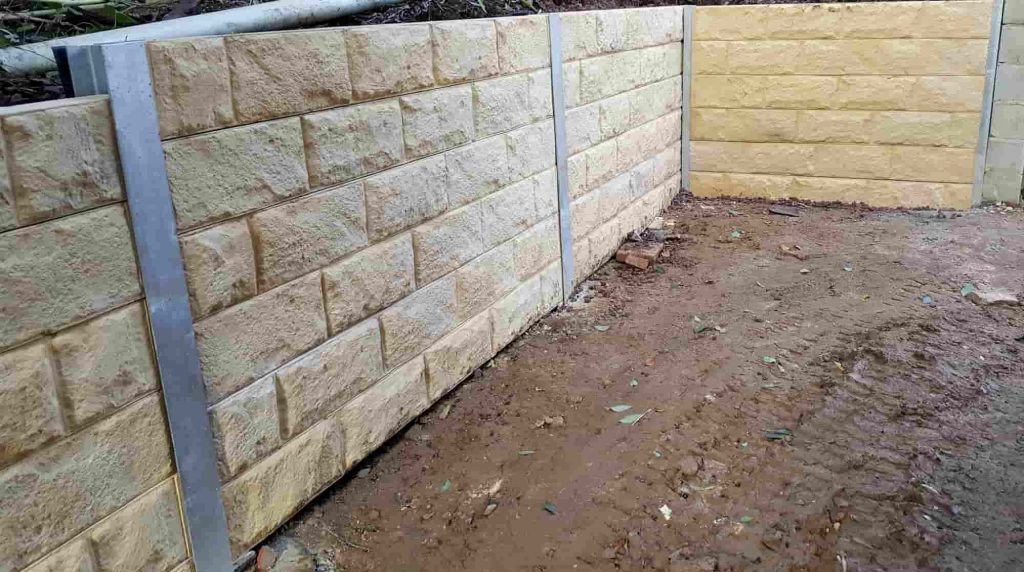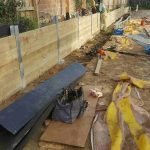Introduction
Transforming outside spaces is not almost visual appeals; it has to do with functionality and sustainability. One of the most effective methods to achieve this is through the installation of keeping walls. Retaining walls serve an important function in managing soil erosion, producing flat surfaces for landscaping, and improving the general appeal of your garden or yard. But accomplishing a best retaining wall needs know-how, ability, and the ideal materials. This short article will look into http://danteknmj052.almoheet-travel.com/exploring-ingenious-solutions-with-modern-retaining-wall-installers the world of skilled retaining wall installers and how they can change your outdoor area utilizing various products like timber sleeper, concrete sleeper, and H beam
Understanding Keeping Walls: The Basics
What is a Maintaining Wall?
A retaining wall is a structure created to keep back soil and avoid erosion. They are commonly used in landscaping to produce terraces or leveled areas in sloped yards.
Why Are Maintaining Walls Important?
Retaining walls are vital for numerous factors:
- Erosion Control: They help avoid soil from sliding down slopes. Landscaping Opportunities: Produce functional flat locations on sloped land. Aesthetic Appeal: They can boost the appearance of your garden.
Materials Used in Retaining Wall Construction
Timber Sleeper
Timber sleepers are a popular choice for maintaining walls due to their natural appearance and ease of use.
Advantages of Lumber Sleepers
Natural Look: They mix perfectly with outdoor environments. Cost-Effective: Usually more economical than concrete options. Versatile Style: Easy to cut and form to fit any project.Disadvantages of Lumber Sleepers
Durability Issues: Susceptible to rot and pest damage. Maintenance Needed: Regular treatment required to prolong lifespan.Concrete Sleeper
Concrete sleepers have actually become significantly popular due to their strength and durability.
Advantages of Concrete Sleepers
Longevity: Resistant to weathering, bugs, and rot. Low Maintenance: Very little upkeep needed compared to timber. Variety of Styles: Offered in several textures and colors.Disadvantages of Concrete Sleepers
Higher Preliminary Costs: More pricey than timber options. Heavy Weight: Needs professional setup due to weight.H Beam
H beams use structural support for bigger maintaining walls that need additional stability.
Advantages of H Beams
Strength and Stability: Perfect for high-load applications. Durable Material: Resistant to deterioration when properly coated. Versatile Usage Cases: Suitable for numerous landscaping designs.Disadvantages of H Beams
Cost Factor to consider: More pricey than standard materials. Installation Intricacy: Requires experienced professionals for proper setup.Choosing the Right Installer
What Makes a Professional Installer?
When it comes to transforming outdoor spaces with skilled retaining wall installers, professionalism matters immensely. A professional installer must have:
- Extensive experience in different materials consisting of timber sleeper, concrete sleeper, and H beam. A robust portfolio showcasing previous projects. Positive customer reviews showing reliability and quality work.
Questions to Ask Prospective Installers
- What products do you recommend for my specific project? Can you provide references from previous clients? Do you have liability insurance?
The Setup Process: Step by Step
Initial Consultation
Before any work starts, a preliminary assessment with the installer is vital to understand your requirements, budget plan, and vision.
Site Assessment
The installer will examine your property's topography, drainage systems, and possible challenges throughout installation.
Designing the Wall
Collaborating with a specialist allows you to select the very best style matched for your landscape while guaranteeing structural integrity.
Preparing the Site
This involves clearing the area where the wall will be positioned, which may include eliminating vegetation or debris.
Building the Wall
Finally, proficient installers will execute their knowledge in putting down either timber sleepers, concrete sleepers, or H beams according to prepare requirements while making sure security requirements are met.
Maintenance Tips for Your Keeping Wall
Regular Inspections
Check for signs of wear or damage at least two times a year, specifically after heavy rain or storms.
Drainage Solutions
Proper drainage is crucial! Ensure that water flows far from your retaining wall to prevent saturation which can lead to failure over time.
Cleaning
Keep it clean! Get rid of any particles that accumulates on the top or around your wall which can trap wetness against its surface.
FAQs About Retaining Walls
Q1: For how long does it require to set up a maintaining wall?
A: The setup timeframe varies based upon size and material however usually ranges from 1-5 days depending on complexity.
Q2: Can I build my own keeping wall?

Q3: Just how much does it cost to set up a retaining wall?
A: Expenses differ commonly based upon material choices (timber sleeper vs concrete sleeper), size, area specifics; anticipate anywhere from $15-$50 per square foot set up professionally.

Q4: Do I require permits for constructing a retaining wall?
A: Yes! A lot of regional authorities require permits especially if the wall surpasses particular height limits-- talk to specialists who know regional regulations!
Q5: Will my plants be affected by a brand-new keeping wall?
A: It depends on positioning; nevertheless appropriate planning by specialists can minimize disruption while enhancing overall landscape health!

Q6: How do I select between timber sleeper and concrete sleeper?
A: Think about aesthetic appeals versus sturdiness; if you're searching for something lovely that mixes naturally choose wood but if longevity is crucial then lean towards concrete!
Conclusion
Transforming outside spaces with knowledgeable retaining wall installers is not simply about putting up structures; it has to do with crafting customized solutions that harmonize functionality with visual appeal. Whether you opt for timber sleeper walls that evoke rustic appeal or sturdy concrete sleepers designed for durability-- comprehending your alternatives empowers you as a property owner! Seeking professional help guarantees every aspect of installation satisfies high standards while addressing both immediate needs and future upkeep concerns efficiently! So why wait? Accept this opportunity today; turn your landscape dreams into reality by teaming up with experienced installers who bring innovation right into your backyard!